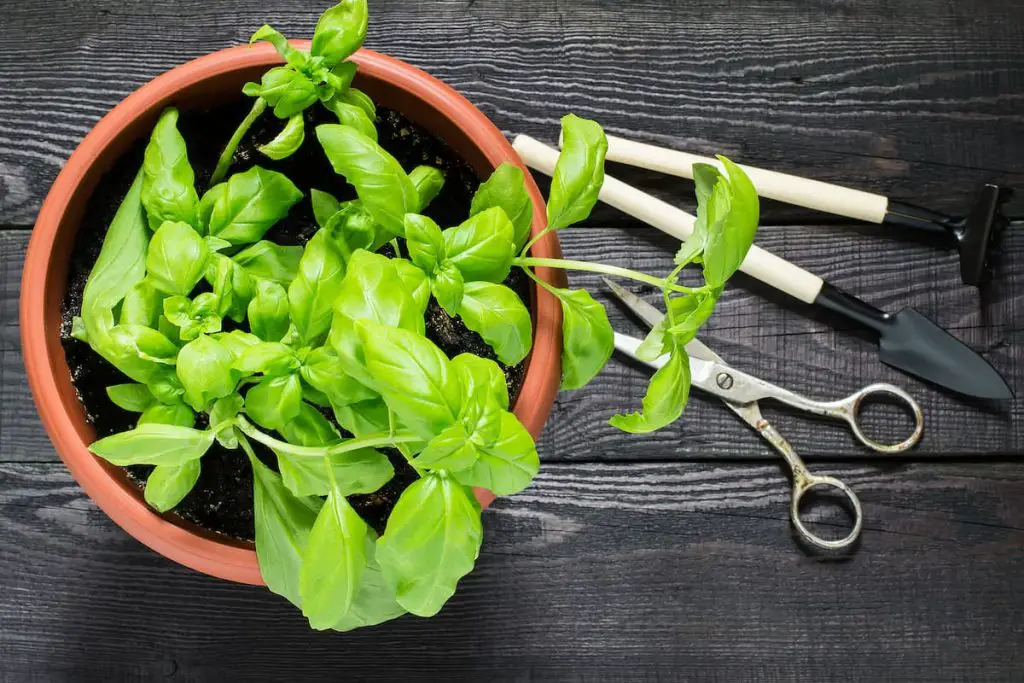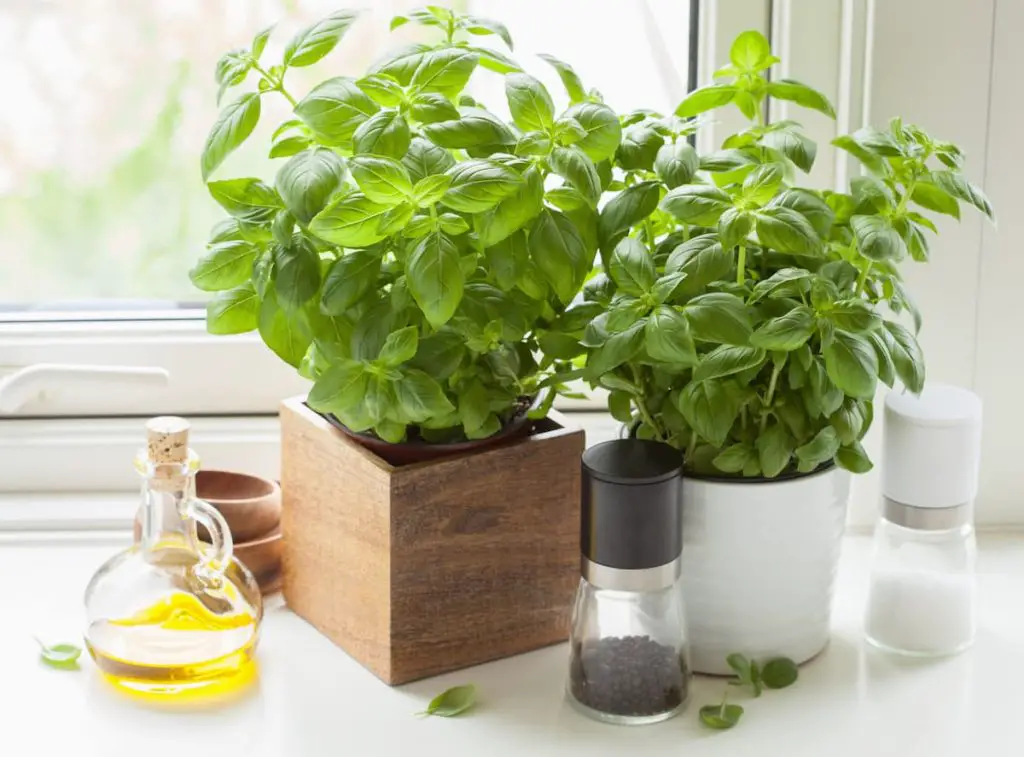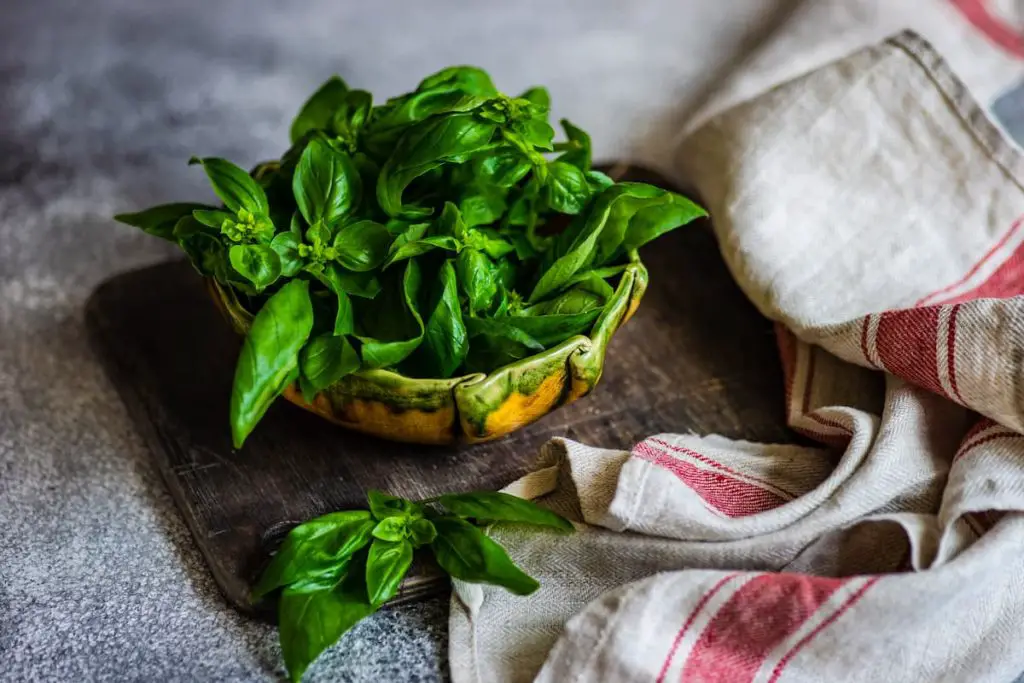4 Easy Ways to Freeze Fresh Basil Leaves (Step-by-Step)
Basil is a very delicate herb that is widely used worldwide for its spicy flavor and medicinal properties. Fresh basil can not survive more than a week, but what if you have basil in bulk or your garden is flooded with basil in its season? You can keep it for longer by freezing it.
You can freeze basil to extend its shelf life up to three months. However, basil is a very tiny and delicate herb, and freezing it can be challenging. After thorough rinsing and drying, you can freeze it in freezer bags and ice cube forms. You can also freeze basil pesto for later use.
In this article, I will guide you on how to choose the best basil leaves, how to freeze basil in easy steps, and how long you should store it. Furthermore, we will find some alternative ways to save basil for later use.

Which Basil Leaves Are Best To Freeze?
Basil leaves can grow up to 2”-3” (5.08-7.62 cm). However, some leaves are harvested at a very young age. Small leaves work fine in garnishing and grinding, but they are more delicate and complicated to handle singularly. The size of the basil leaves to choose depends on how you plan to freeze them.
Matured basil leaves are the best to freeze. Use big leaves of 1”-3” (2.54-7.62 cm) for the freezer bag technique. If you are freezing chopped leaves or basil puree in ice cubes, you don’t need to worry about the size and variety of the leaves. However, make sure the leaves are as fresh as possible.
There are many varieties of basil all over the globe, but you can freeze all types of basil the same way. Just consider the size and freshness of the leaves before freezing. Avoid using basil leaves that are past their prime for freezing purposes.
Four Ways To Freeze Fresh Basil
You can freeze basil in several ways. All of the following freezing methods have pros and cons and offer different shelf lives.

Here are four ways to freeze basil:
- Freeze basil in freezer bags.
- Freeze basil in Ice trays.
- Freeze finely chopped basil in different shapes.
- Freeze basil pesto.
1. Freeze Basil in Freezer Bags
Basil doesn’t like extreme temperatures, which is why it becomes a little challenging to freeze basil. However, following the instructions below, you can easily extend basil’s life by freezing it in freezer bags.
Before pursuing the freezing process, make sure you have the following things in hand:
- Fresh basil leaves
- Freezer bags
- Parchment paper
- Scissors
- Warm and cold water in two bowls
- Paper towel
Now, freeze basil leaves in the following three steps.
Prepare the Leaves for Freezing
Preparing leaves for freezing means cleaning and making them ready to put in the freezer bag. There might be small insects and dirt on leafy vegetables and herbs, and freezing them without washing will freeze the insects and dirt too. By cleaning them before freezing, you will save time later on.

Follow these steps to clean fresh basil leaves:
- Pluck out the leaves from plant stems.
- Dip them in warm (not hot) water for 5 seconds.
- Take them out and dip them in cold water for 10 seconds.
- Spread the leaves on a paper towel and soak up the excess water by putting another towel over them.
Put the Leaves in Freezer Bag
Freezer bags are airtight, and you can create a vacuum inside them. Vacuum freezer bags store the food safe for longer.
Follow the given steps to put basil leaves in the bags before freezing them:
- Cut the parchment paper in a size that fits in the freezer bag.
- Put the parchment paper on a flat surface and lay down some basil leaves on it. Make sure you don’t overlap the leaves.
- Stack several layers of parchment paper and leaves.
- Put another layer of parchment paper on the top and carefully place the whole stack in the freezer bag.
- Dip the bag in cold water to the neck in order to push out the air and create a vacuum. Alternatively, you could seal the bag almost all the way and use a straw to suck out the air in the bag.
- Seal the zip.
Put the Bag in the Freezer
The major process is done, so now, you need to put the bags in the freezer. Make sure you don’t stack them one over the other. Instead, keep the freezer bags standing vertical like books on the shelf so that you won’t cram the leaves inside. You can freeze full basil leaves for up to three months.
2. Freeze Basil in Ice Trays
Another way to freeze basil is to puree them and freeze them as ice cubes. This way is perfect for adding basil in smoothies, sauces, or any dish you would like to add basil puree.
Freeze basil leaves as ice cubes in the following steps:
- Wash the basil leaves in warm and cold water, respectively.
- Put the leaves in the grinder and puree them.
- Transfer the puree into ice trays.
- Freeze them overnight.
- Once frozen, take the basil ice cubes out and store them in an airtight glass jar or freezer bag.
- Keep the container in the freezer. When you’re ready to use, either remove the number of cubes you need or put the entire jar into the refrigerator to thaw. In this case, you’ll want to use all of the thawed basil puree within a few days. In ice cube form basil puree will last in the freezer for up to six months.
3. Freeze Fine Chopped Basil Leaves in Different Shapes
If you don’t want to puree basil leaves and wish to save them for extended periods, freezing chopped basil is a fun and effective way to save basil for later use. Frozen chopped basil is best used in curries, noodles, or pasta.
Follow simple steps to freeze chopped basil leaves:
- Rinse basil leaves thoroughly under warm and cold water.
- Soak up the excess water by leaving them on a paper towel for a few minutes.
- Finely chop the leaves with the help of a chopper or a knife. If you are using a knife, please be cautious while handling it.
- Put the chopped leaves in a bowl and add 1-3 tbsp (14.3 to 42.52 grams) olive oil.
- Mix it well with fingers or a spatula.
- Spread the mixture on a tray with at least half an inch thickness.
- Put the tray in the freezer overnight.
- Cut the basil cake in desired shapes with knife or shape cutters.
- Store the shapes in a glass jar or bag in the freezer.
Frozen fine chopped basil leaves will last in the freezer for around six months.
4. Freeze Basil Pesto
Pesto is an Italian way of adding different herbs to our diet for their unique flavors and health benefits. However, you can store pesto for up to two weeks in the fridge. If you wish to store it for longer, freeze it in ice cube trays, and the basil pesto will keep for up to six months.
Things you need to make basil pesto:
- 1 oz (28 gms.) basil leaves
- Two cloves of garlic
- 1 tbsp (14.3 grams) olive oil
- ½ cup (0.24 L) pine nuts
- ½ cup (0.24 L) parmesan cheese.
Follow these simple steps to make basil pesto and freeze it for extended shelf life:
- Mix all the ingredients in the grinder and make a paste.
- Pour the pesto into an ice tray.
- Freeze overnight.
- Take out the pesto ice cubes and store them in an airtight glass jar or freezer bag.
- Keep the container in the freezer until you’re ready to use one or more cubes.
You can add pesto in salads, noodles, soups, slices of bread, potato fries, and other foods. Before using pesto in the dish, leave the pesto ice cubes in a bowl on the kitchen counter for a few minutes. Then use the melted pesto in your favorite dishes.
The Shelf Life of Frozen Basil Leaves
Different food items have different shelf lives. The frozen food item’s shelf life depends on the temperature at which they are frozen and stored.

Frozen basil can last up to eight to ten months, especially if your freezer’s conditions are good, the temperature is stable, and leaves are fresh at the time of freezing. Ideally, it would be best if you kept the temperature below -18 °C (-0.4 °F).
On the safer side, I advise you to use your frozen basil herbs within six months. Moreover, if you notice anything odd such as a bad smell, change in color, or excessive ice formation on the frozen veggies, it is best to avoid eating them.
Alternative Ways To Extend Shelf Life of Basil
If freezing basil doesn’t suit your requirements or sounds like too much work, there are several other ways to extend basil’s shelf life.
- Dry out basil leaves in a paper bag and store them in a glass container for later use.
- Grow fresh basil all year long on your kitchen windowsill.
- Make basil paste and dry/dehydrate it in small coin shapes. Store these basil coins and use them afterward in hot soups or chilled smoothies. Soak them in warm water for a few minutes before use.
Conclusion
Basil is a culinary herb widely consumed for its spicy flavor and medicinal properties. However, if you find it challenging to add spices to your dishes just because they are not readily available in the kitchen all the time, having frozen basil on hand will help.
Basil leaves can be frozen whole in freezer bags or pureed in ice trays. You can also freeze basil pesto to extend its shelf life. Frozen basil in all forms is best to use within three to six months.


